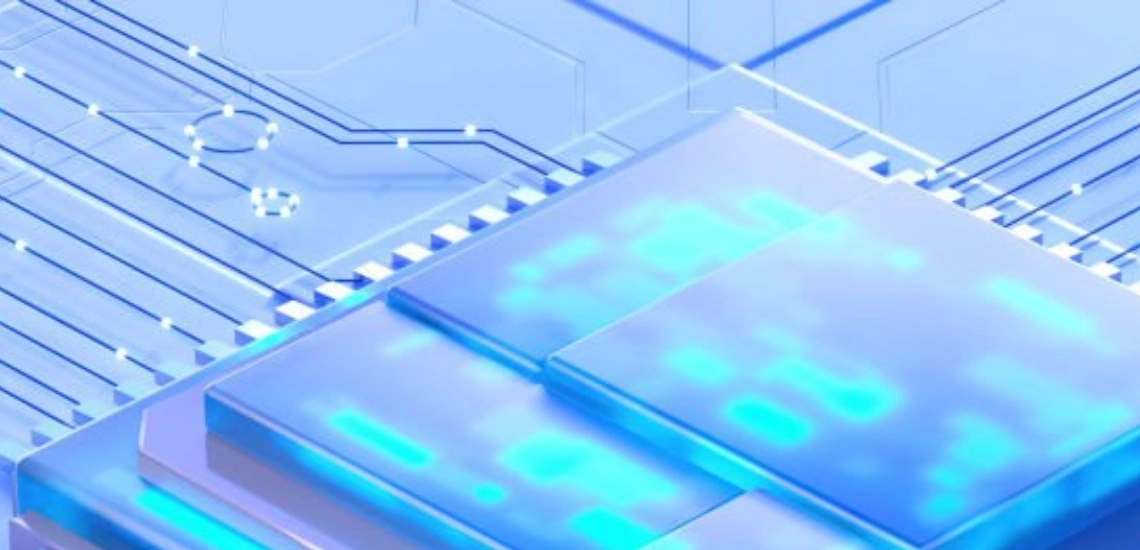The relentless pace of innovation in the semiconductor industry demands efficiency and precision at every stage. Long gone are the days where brute force automation reigned supreme; the modern landscape calls for agile, adaptable solutions that can seamlessly integrate with both humans and equipment. Enter the realm of collaborative robotics, where cobots are poised to revolutionize tool handling and automation, reshaping the very fabric of semiconductor manufacturing.
Cobots in the Cleanroom: A Symbiotic Partnership
Unlike their industrial robot counterparts, cobots are lightweight, flexible partners specifically designed to work alongside humans. Operating within designated safety zones, their gentle movements and inherent collaboration capabilities pave the way for a symbiotic relationship within the cleanroom environment. Here’s how cobots are changing the game:
- Safeguarding the Human Factor: Semiconductor fabrication often involves tasks that are repetitive, ergonomically challenging, or potentially hazardous. From wafer handling to tool cleaning and maintenance, cobots can take on these physically demanding roles, reducing employee fatigue and exposure to risks. Their built-in safety features prevent collisions and injuries, fostering a safer and more comfortable work environment.
- Expanding Automation Horizon: Cobots go beyond traditional robotic applications, venturing into previously manual-intensive areas. Their agility and ease of programming allow them to tackle intricate tasks like pick-and-place operations, equipment loading and unloading, and delicate material handling. This expands the scope of automation, liberating human workers to focus on higher-level activities like process optimization and quality control.
- Boosting Speed and Efficiency: Cobots, unlike their slower, bulkier industrial counterparts, exhibit remarkable dexterity and rapid response times. They can effortlessly adapt to changes in production volume and seamlessly integrate into existing workflows, minimizing process interruptions and bottlenecks. This agility translates to increased productivity, enabling faster cycle times and higher throughput.
- Adaptability and Futureproofing: Semiconductor technology evolves at a breakneck pace, demanding flexible automation solutions that can adapt to changing needs. Cobots shine in this arena, with their modular designs and easy reprogramming capabilities allowing them to handle new tasks and integrate with different equipment configurations. This future-proofs operations, ensuring adaptability in the face of technological advancements.
Benefits of Embracing the Cobot Revolution
Integrating cobots into the cleanroom offers a multitude of advantages:
- Improved Safety: Cobots are inherently safer than traditional industrial robots, with built-in features like collision detection and force limiting. This minimizes the risk of accidents and injuries for human workers.
- Enhanced Flexibility: Unlike their rigid counterparts, cobots can be easily reprogrammed and adapted to new tasks. This flexibility allows them to handle a wider range of jobs and adapt to changing production needs.
- Increased Productivity: Cobots can automate repetitive tasks, freeing up human workers for more complex tasks and improving overall production throughput.
- Reduced Costs: Cobots typically have lower upfront costs and require less maintenance compared to traditional robots, making them a cost-effective automation solution.
- Improved Worker Satisfaction: By taking over tedious and potentially dangerous tasks, cobots can make jobs more enjoyable and less physically demanding for human workers.
Challenges: Bridging the Gap between Cobots and Cleanrooms
While the benefits of cobots are undeniable, integrating them into the sterile and intricate world of semiconductor manufacturing presents unique challenges:
- Cleanroom Compatibility: Protecting the sensitive nature of chip production, the cleanroom environment demands stringent hygiene and contamination control. Cobots must be designed with cleanroom compatibility in mind, employing materials and lubricants that prevent particle shedding and comply with strict airflow regulations.
- Integration with Existing Infrastructure: Semiconductor tools are often complex and bespoke systems, not readily adaptable to external automation integration. Implementing cobots may require retrofitting existing equipment or designing custom interfaces, demanding careful planning and compatibility testing.
- Programming and Skillset Development: Unlike traditional robots, cobots often require a different approach to programming and deployment. This shift necessitates new skillsets for engineers and technicians, requiring training in cobot interaction and collaborative workflow design.
- Addressing Human-Robot Interface Issues: Ensuring seamless collaboration between humans and cobots requires careful consideration of user interface design, safety protocols, and communication channels. Trust and acceptance on the human side are crucial for successful cobot integration.
The Future of Cobots in the Semiconductor Landscape
Despite the challenges, the future of cobots in the semiconductor industry appears bright. Advancements in technology, including improved sensors, artificial intelligence, and human-robot interaction interfaces, are continually pushing the boundaries of cobot capabilities. Moreover, the industry is increasingly recognizing the value of cobots and investing in their integration.
Here are some potential future trends:
- Increased adoption: As cobots become more affordable and user-friendly, their adoption across the semiconductor industry is expected to grow significantly.
- Specialization: Cobots will likely be designed for specific tasks and applications, catering to the diverse needs of the cleanroom environment.
- Cloud-based solutions: Cloud-based platforms for cobot management and data analysis will enable remote monitoring, troubleshooting, and predictive maintenance.
- Human-robot collaboration: The focus will shift towards seamless human-robot collaboration, where cobots act as assistants and augment human capabilities.
Conclusion
Despite the challenges, the potential of cobots in semiconductor automation is undeniable. Their flexibility, safety, and ease of integration are setting the stage for a future where humans and robots work side-by-side, weaving a collaborative tapestry of efficiency and precision. As technology advances and partnerships strengthen, cobots will move beyond niche applications, becoming an integral part of the semiconductor manufacturing landscape.




